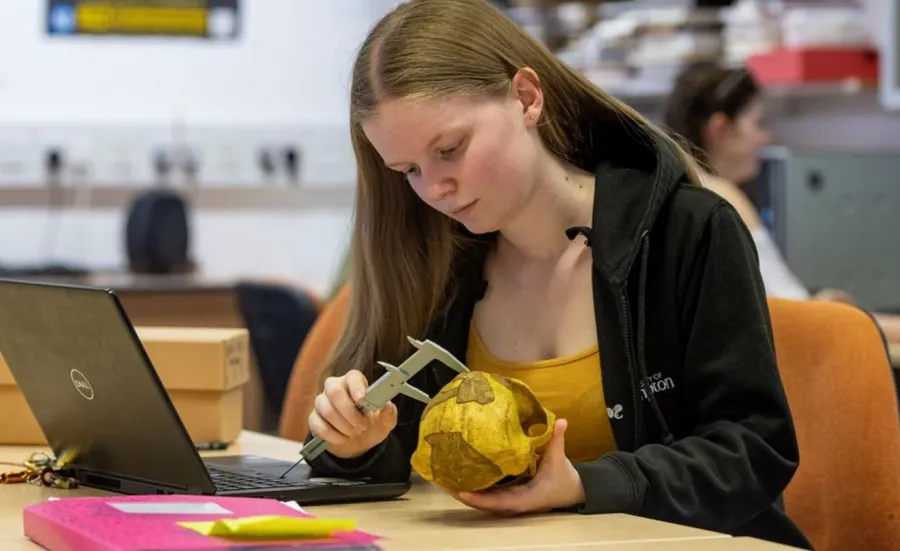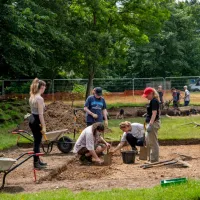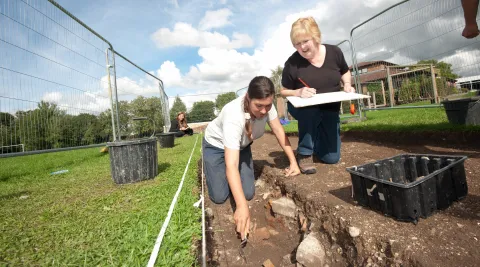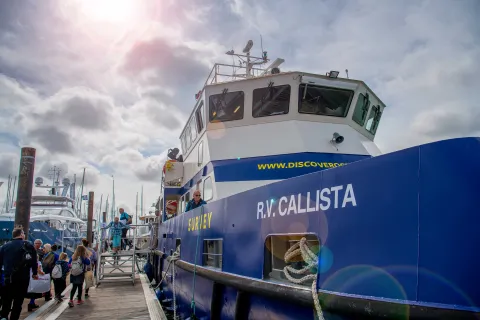About the Archaeology labs
Our purpose-built archaeology building at Avenue Campus is home to the latest archaeological Laboratory and equipment. You’ll learn the scientific principles, theories and techniques behind the discipline.
Archaeology teaching lab
The Nick Bradford Laboratory is the largest teaching space in our building. It has features where we display objects and equipment for our teaching, fieldwork and other research. We run practical classes to understand past techniques of production through recording and analysing artefacts and materials, and producing experimental work.
We use it as space for post-excavation analysis and recording, such as of pot sherds and small finds. It’s also space for informal discussions and gatherings, and has multiple screens and a visualiser for presentations.
Osteoarchaeology labs
Our osteoarchaeology (bones) labs are where we curate our skeletal collections. We have human skeletons and cremations which range in date from the Roman period through to the Medieval. Also, our faunal remains collections which comprises of archaeological and comparative collections of the skeletons of birds, fish and mammals.
Ceramics and stone lab
This suite of rooms provides spaces for the analysis of inorganic artefacts, in particular those of pottery and stone.
Here, we can examine samples of material to establish their:
- properties, and so their possible origins
- technology of production
- the uses to which they were put
We also have comparative collections of rock types to aid geological identification, large and important assemblages of lithic tools from various sites, and significant assemblages of archaeological ceramics, in particular from Egypt and North Africa. Students are welcome to use these spaces and collections, alongside our microscope lab, for their own research projects.
Digital Humanities (Computer) lab
Our Digital Humanities lab is a teaching and learning space where students have access to high-performance computers and specialist software such as:
- Geographic Information System (GIS)
- photogrammetry software
This enables them to generate maps, process scans and create 3D models of landscapes, archaeological sites, artefacts and shipwrecks.
Isotope sampling lab
We prepare samples for isotopic analysis in this lab. Dissertation and research students use these techniques to identify details about an individual such as their diet or where they grew up. We also have access to the isotope laboratory at the National Oceanography Centre Southampton.
Maritime archaeology lab
Our Centre for Maritime Archaeology lab is a teaching and communal space shared amongst staff and students. Here you can find our maritime archaeology library collection and delve into the nautical past with some of our boat plans and tools. We use the lab to teach boat recording and survey techniques, and for seminars and meetings. It is a space that students and staff can use for focused studies and research.
Palaeolithic archaeology lab
This teaching space, named after the archaeologist John Wymer, focuses on the earlier part of the Stone Age (3.5 million to about 10 thousand years ago), bringing together our extensive collection of stone tools (which became increasingly complex over time), experimental tests of organic technologies such as:
- weapons
- art
- glues
- cords
- textiles
We also have casts of key human ancestors, and a large library of books and papers. You’ll be able to explore and use these collections, learn about human activity and human evolution, and experimentally evaluate ancient technologies.



